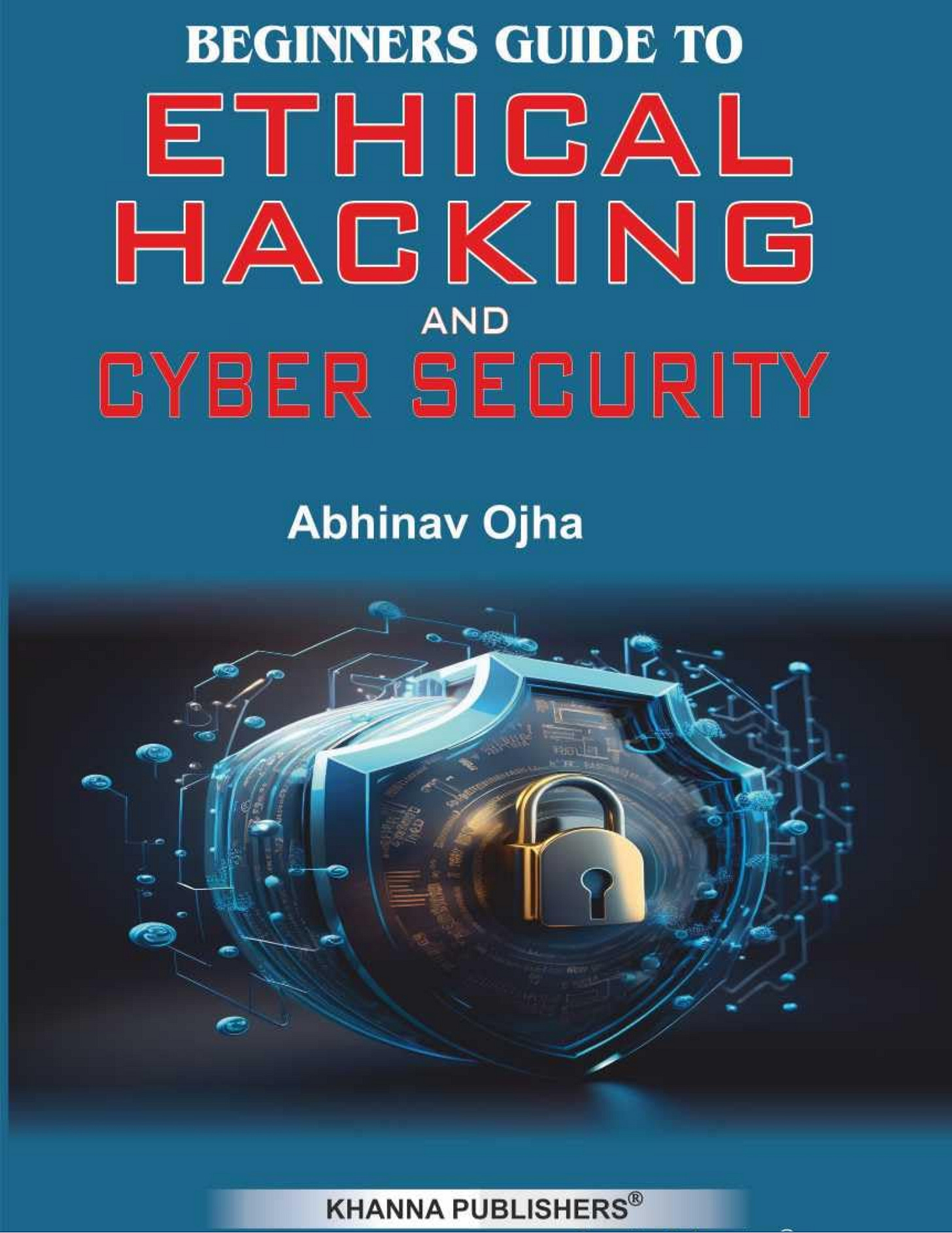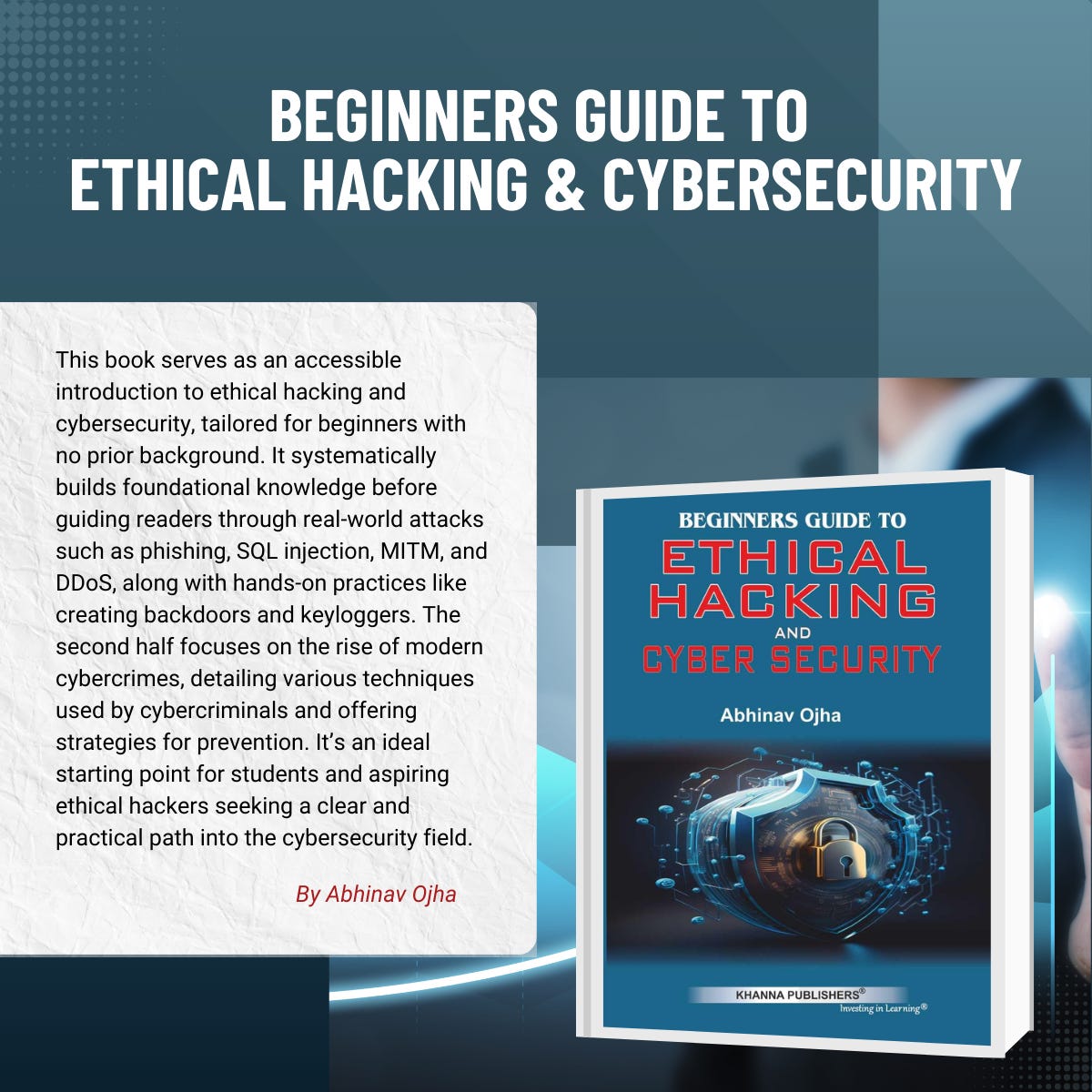Beginners Guide to Ethical Hacking & Cybersecurity
A beginner-friendly guide to ethical hacking and cybercrime. Learn basic attacks, practical hacking steps, and how to prevent digital fraud with no prior tech background required.
In this edition of Cyber Book Club, we’re highlighting Beginners Guide to Ethical Hacking & Cybersecurity by Abhinav Ojha, a foundational resource designed for students and complete beginners who want to understand ethical hacking and cybersecurity from the ground up.
Written in simple language with a hands-on approach, this book builds a base in ethical hacking before introducing real-world cyber threats and practical exercises. Ojha walks readers through key concepts like footprinting, phishing, SQL injection, MITM, DDoS, wireless attacks, and password cracking, helping learners understand how attacks happen and how to simulate them ethically.
In the second half, the book shifts focus to cybercrime awareness, detailing common digital crimes affecting individuals and businesses and providing preventative strategies. From creating backdoors to understanding fraud trends in a digital economy, this guide covers a wide range of foundational topics in one place.
What You Will Learn
Basic concepts of ethical hacking and cybersecurity
Hands-on hacking techniques including phishing, SQL injection, and DDoS
How to perform reconnaissance and create keyloggers and backdoors
Types of recent cybercrimes and how to prevent them
How to think like a hacker and defend against real-world threats
Who This Book Is For
This book is ideal for:
Students and complete beginners in cybersecurity
Aspiring ethical hackers with no prior experience
Educators looking for beginner-level material for teaching
Readers in India and beyond seeking localized cybercrime context
Whether you are curious about ethical hacking or planning a career in cybersecurity, Beginners Guide to Ethical Hacking & Cybersecurity offers a simple and effective place to start.
Table of Contents (Highlights)
Introduction to Ethical Hacking
Footprinting and Reconnaissance
Hacking Attacks: Phishing, SQL Injection, MITM
Wireless, DDoS, and Password Attacks
Creating Keyloggers and Backdoors
Cybercrime and Real-World Cases
Preventing Online Fraud and Digital Scams





